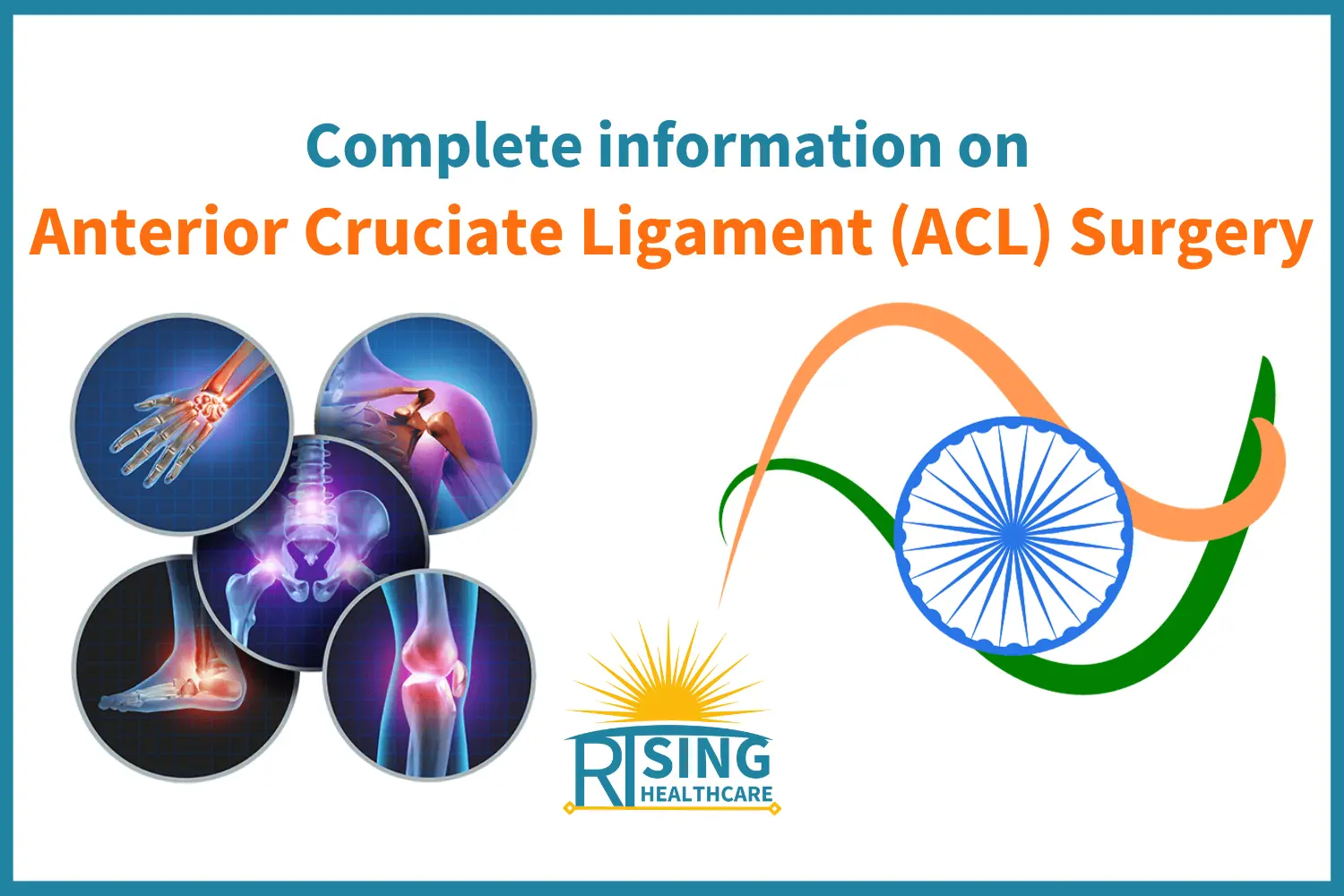
Understanding Anterior Cruciate Ligament (ACL) Surgery: Types, Recovery, and More
Anterior Cruciate Ligament (ACL) injuries are quite common, especially among athletes and active individuals. When the ACL gets damaged, it can lead to pain, instability, and limitations in mobility. In many cases, surgery becomes necessary to restore stability and function to the knee joint. In this comprehensive guide, we will explore ACL surgery, focusing on different types of surgeries, the process of ACL reconstruction, and what to expect during recovery.
Contents
What is Anterior Cruciate Ligament (ACL) Surgery?
Anterior Cruciate Ligament Surgery Explained
Anterior Cruciate Ligament (ACL) surgery is a medical procedure performed to repair or reconstruct a damaged ACL in the knee. The ACL is a critical ligament that helps stabilize the knee joint, and injuries to this ligament are quite common in sports and physical activities.
Why ACL Surgery May Be Needed
ACL injuries can range from partial tears to complete ruptures. Depending on the severity of the injury and the individual’s activity level, a healthcare provider may recommend ACL surgery. Here are some common reasons for undergoing ACL surgery:
1. Complete ACL Tear
A complete tear of the ACL usually requires surgical intervention, especially for individuals who want to return to sports or maintain an active lifestyle. A torn ACL cannot heal on its own because it lacks sufficient blood supply.
2. Partial ACL Tear
In some cases, the ACL may sustain a partial tear, where only a portion of the ligament is damaged. The decision to undergo surgery for a partial tear depends on factors such as the individual’s age, activity level, and the extent of the tear.
3. Instability and Functional Limitations
ACL injuries often result in knee instability, making it challenging to perform daily activities or participate in sports. Surgery can help restore stability and function to the knee.
Types of ACL Surgery
There are different types of ACL surgery, and the choice of procedure depends on various factors, including the extent of the ACL injury and the individual’s goals. The two primary types of ACL surgery are:
1. ACL Reconstruction Surgery
ACL reconstruction surgery is the most common procedure performed to repair a completely torn ACL. During this surgery, the damaged ACL is replaced with a graft, typically taken from another part of the patient’s body (autograft) or from a donor (allograft). The graft serves as a scaffold for new tissue growth, eventually creating a stable ligament.
2. ACL Repair Surgery
ACL repair surgery is a less common procedure and is usually reserved for specific cases of partial ACL tears. In this procedure, the torn portion of the ACL is stitched together to promote healing and preserve the ligament as much as possible.
Understanding ACL Reconstruction Surgery
What is ACL Reconstruction Surgery?
ACL reconstruction surgery is the go-to procedure for individuals with complete ACL tears or those with significant instability and functional limitations due to ACL injuries. The surgery aims to create a new ACL by using graft tissue from the patient’s own body or a donor.
Procedure Steps
Step 1: Preoperative Evaluation
Before the surgery, you will undergo a thorough evaluation by your healthcare provider. This includes a physical examination, imaging tests (such as an MRI), and discussions about your goals and expectations.
Step 2: Anesthesia
During ACL reconstruction surgery, you will be given anesthesia to ensure you are pain-free and unconscious during the procedure. The type of anesthesia used (general or regional) will depend on your surgeon’s recommendations and your comfort level.
Step 3: Graft Harvesting
The surgeon will then harvest the graft tissue, which is typically taken from one of the following sources:
- Autograft: Graft tissue is taken from your own body, commonly from the patellar tendon, hamstring tendons, or quadriceps tendon.
- Allograft: Graft tissue is obtained from a donor, usually from a tissue bank.
The choice of graft source will be determined based on your specific case and the surgeon’s preference.
Step 4: Preparing the Knee
The surgeon will make small incisions around the knee to access the ACL. The damaged ACL is carefully removed, and any additional knee injuries (such as meniscus tears) may also be addressed during the surgery.
Step 5: Graft Placement
The harvested graft is then positioned within the knee joint to mimic the natural ACL’s location. It is securely fixed in place using screws, pins, or other fixation devices.
Step 6: Closing Incisions
Once the graft is in position, the surgeon will close the incisions with sutures or staples.
Step 7: Postoperative Care
After the surgery, you will be closely monitored as you wake up from anesthesia. Pain management and physical therapy will begin immediately to help with your recovery.
Recovery Timeline
ACL reconstruction surgery involves a structured recovery timeline to ensure the best outcomes. Here is a general overview of what to expect during recovery:
- Immediately After Surgery: You will likely use crutches and wear a knee brace. Physical therapy will begin to regain range of motion and strengthen the knee.
- Weeks 1-6: Gradual progression of weight-bearing exercises and strengthening exercises. Focus on reducing swelling and improving flexibility.
- Months 3-6: Continue physical therapy to regain strength and stability. Begin sport-specific exercises if your goal is to return to athletic activities.
- Months 6-9: Most individuals can resume low-impact sports and activities. High-impact sports may require additional time and clearance from your surgeon.
- Months 9-12: Gradual return to high-impact sports and activities with the guidance of your healthcare provider.
It’s essential to follow your surgeon’s recommendations and attend all follow-up appointments during the recovery period to ensure your knee heals correctly and is ready for your desired level of activity.
ACL Partial Tear and Treatment Options
What is an ACL Partial Tear?
An ACL partial tear is when only a portion of the anterior cruciate ligament is damaged. It is a less severe injury compared to a complete tear but can still cause discomfort and instability in the knee.
Treatment Options for ACL Partial Tears
The treatment for a partial ACL tear depends on several factors, including the extent of the injury and the individual’s activity level and goals. Here are some common treatment options:
1. Non-Surgical Management
For minor partial tears or in cases where surgery is not recommended, non-surgical treatments may be sufficient. These can include:
- Rest: Giving the knee time to heal by avoiding strenuous activities.
- Physical Therapy: A structured physical therapy program to strengthen the knee and improve stability.
- Bracing: The use of a knee brace to provide additional support.
2. Surgical Repair
In some cases, surgery may be recommended for a partial ACL tear, especially if there is significant instability or if the individual is involved in high-impact sports. The surgical repair of a partial tear typically involves stitching the torn portion of the ligament back together.
3. ACL Reconstruction
In situations where the partial tear is part of a more extensive knee injury or if the individual plans to return to high-impact sports, ACL reconstruction surgery may be recommended. The surgeon will assess the extent of the damage and decide whether graft tissue is necessary to support the repair.

